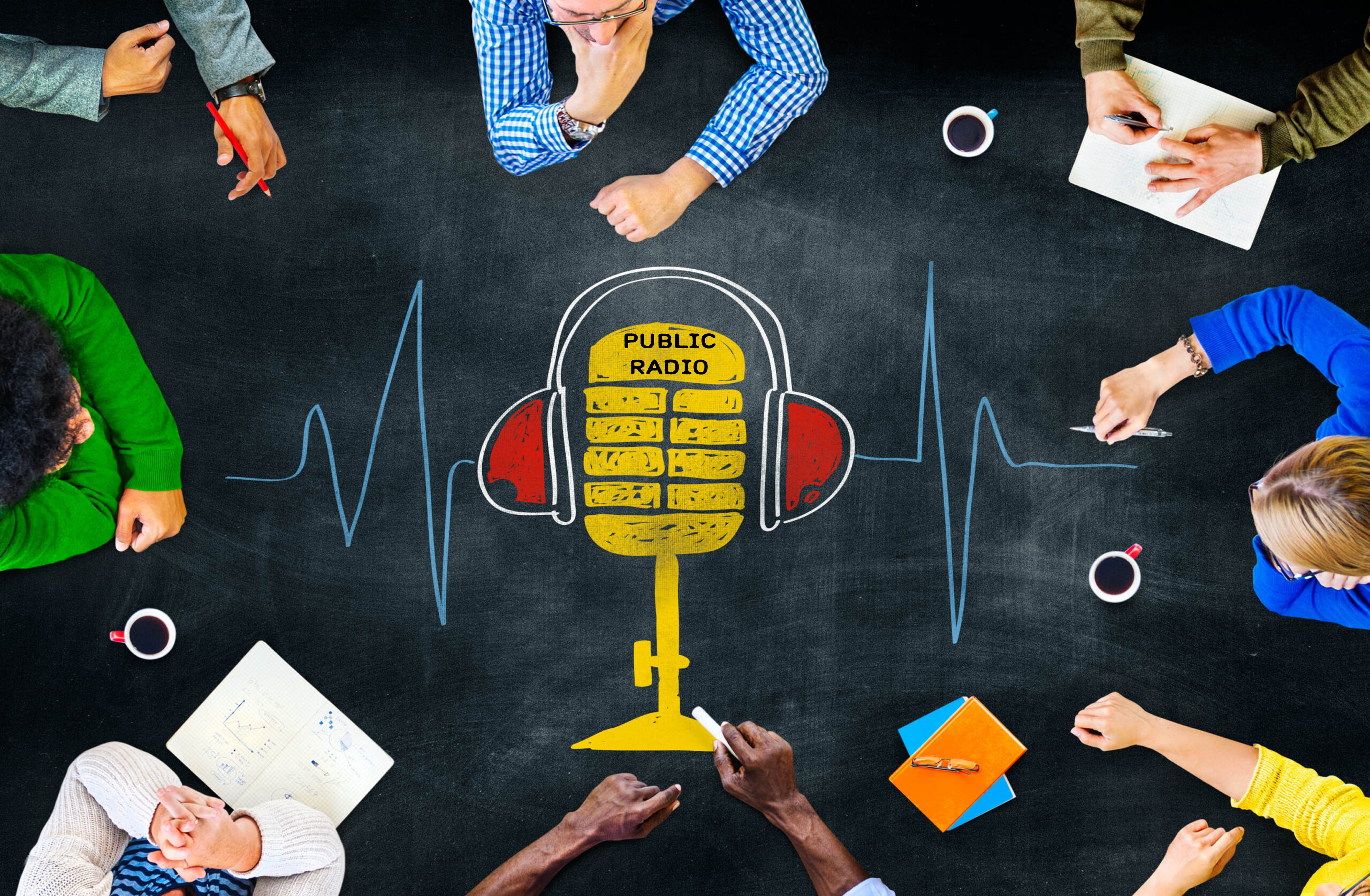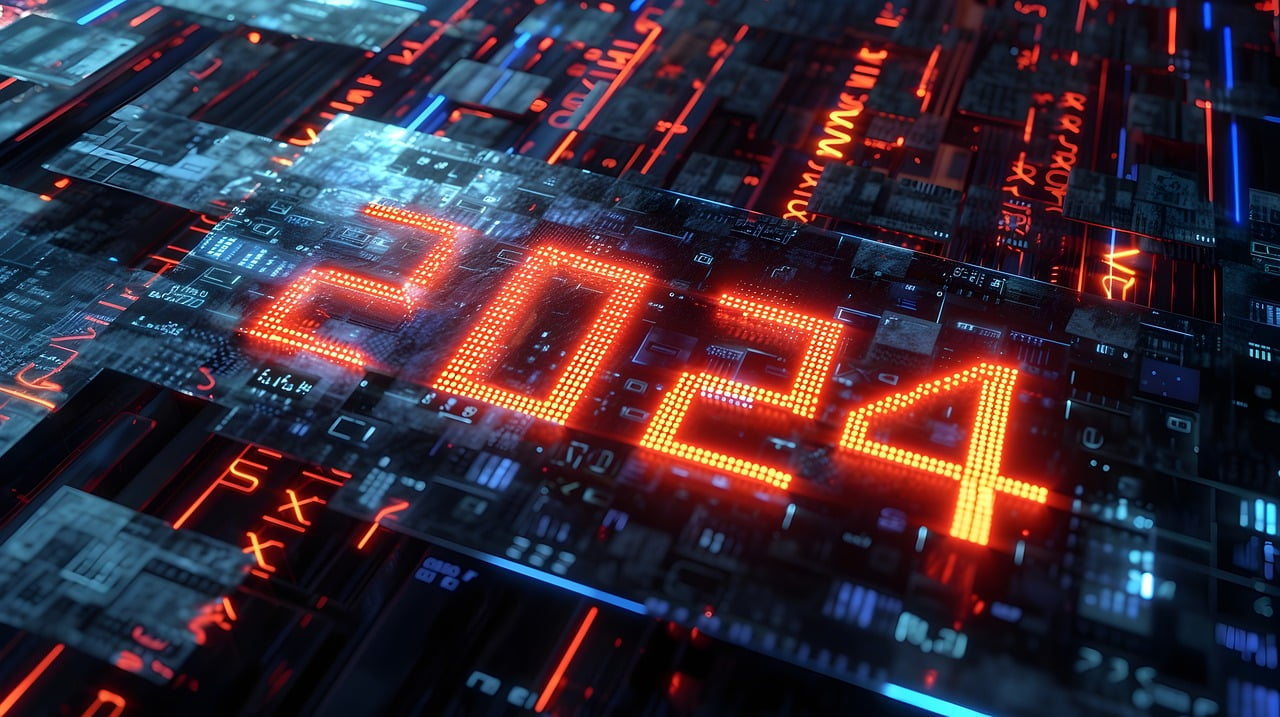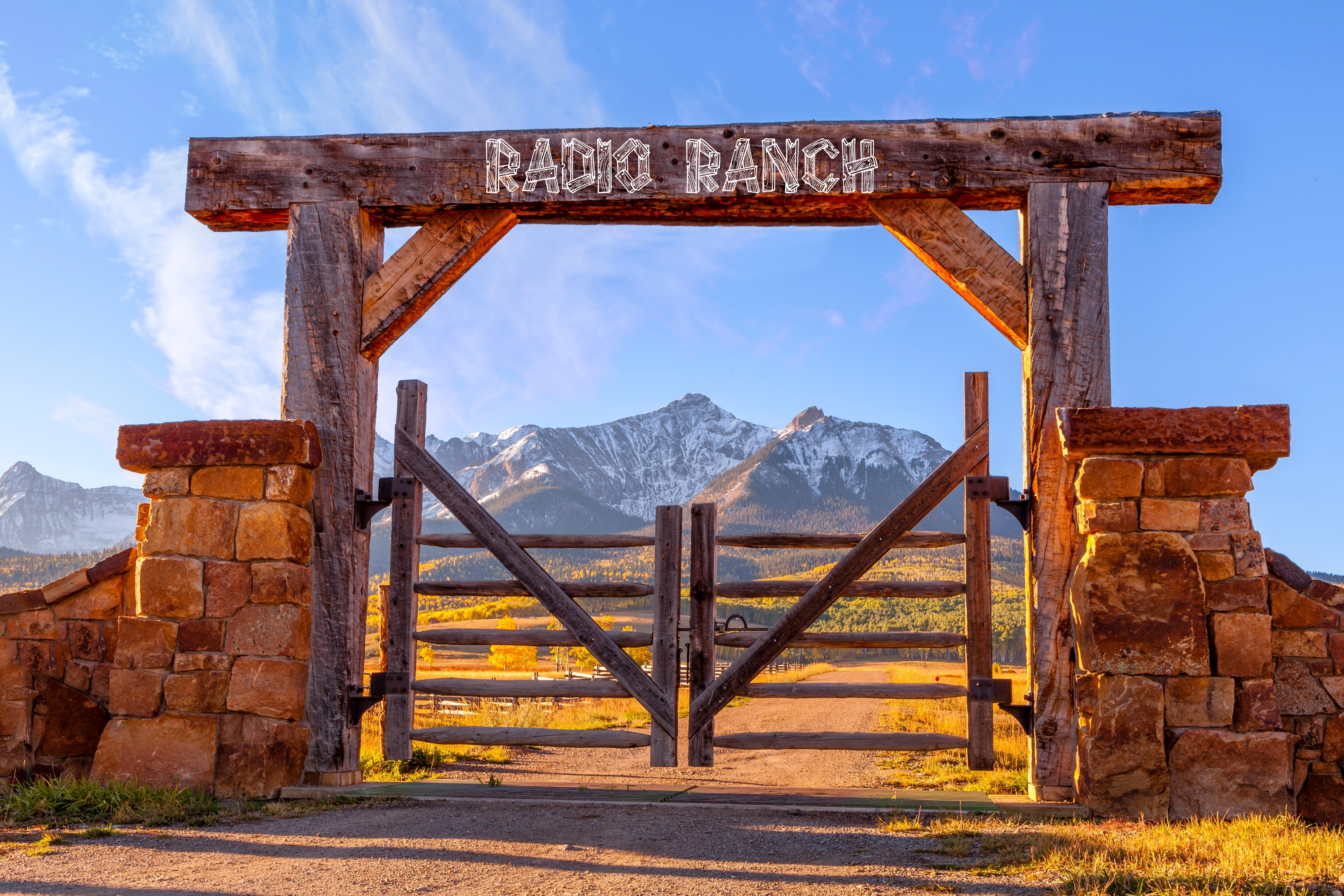
In yesterday’s post, I talked about public radio’s program directors and their historic roles in their organizations. What does it mean to program a public radio station? Who’s in charge of this weighty challenge? What role do other managers play in the station’s content strategy? And why do the responsibilities of public radio programmers differ so greatly from their commercial radio counterparts? In other words, who’s programming public radio stations?
The two responses you hear most often is that it’s a group effort, and “it depends.” Because vacuums vary from organization to organization, who exactly is calling the shots may depend on specifically who’s the station manager and what day-to-day role they play in shaping strategies and tactics.
I believe a reality of radio (or television or film or podcasting) is that the central direction of a media organization’s content model has to emanate from the vision of one person. The “vision thing” at media brands works best when it comes from a single programmer with (hopefully) a plan – in other words, a brand manager, a showrunner, a program director.
So what does the PD at a public radio station actually get to do? They often shuffle network programs the station carries (usually the vast majority of what you hear on these stations to begin with), adding or dropping them on occasion. But rarely, are they involved in the same type of X’s and O’s programming the commercial radio PD spends much of their time thinking about.
majority of what you hear on these stations to begin with), adding or dropping them on occasion. But rarely, are they involved in the same type of X’s and O’s programming the commercial radio PD spends much of their time thinking about.
In public radio, basic formatics, cross-promotional activities, basic messaging, and working with talent (inside or outside of the news department) aren’t even on a PD’s to-do list. There’s not usually a lot of airchecking going on in public radio news/talk stations, even with the “local hosts” of NPR’s popular drivetime news magazines, Morning Edition and All Things Considered. Few of these hometown anchors of network shows are regularly evaluated. As a result, few if any bring a whole lot to the station, often “babysitting” (or board opping) network programs, while reading local news headlines after NPR or BBC newscasts.
When there was very little competition for radio news, public radio stations often had a lock on well-educated locals looking for quality news and information content on the AM or FM bands. They could get away with less immediacy. Being “in the moment” was rarely a priority. The tacit understanding was that when news breaks, your public radio station will be there – more likely, tomorrow – to put it all into perspective. Pre-Trump, that usually worked out pretty well on most days.
 For the same reasons, public radio stations could also get by with loose formatics, a lack of local personality development, and a lackluster, even sloppy promotional strategy. Core listeners generally knew the schedule or lineup of shows anyway.
For the same reasons, public radio stations could also get by with loose formatics, a lack of local personality development, and a lackluster, even sloppy promotional strategy. Core listeners generally knew the schedule or lineup of shows anyway.
But today, the competition for news and information isn’t just fierce, it has exponentially expanded across platforms. This reality is sinking in among public radio’s managers, often frustrated by lapsed listeners and even ex-members who have gravitated to the web, mobile apps, podcasts, and social media for information and commentary, especially in a world where “breaking news” comes virtually every hour, often when most public radio stations are in the middle of broadcasting shows that may be prerecorded, like Fresh Air, 1A, or Wait, Wait…Don’t Tell Me!
Last week in a blog post titled “Radio Could Use A Good Fixer,” a story in Nieman Lab broke down how consumers found out about President Biden pulling out of the election. Their conclusion was their sub-headline:
‘BREAKING: The ways people hear about big news these days; ‘into a million pieces,’ says source”
In this environment, messaging, on-air (and off-air) marketing, and the placement of these elements cannot be left to random chance or even a rotational system that fails to take that moment’s news cycle into account.
The need for a “tactegic” plan – combining the strategic and the tactical – is essential, but often missing in action on the majority of public radio news/talk stations I hear. There’s the compulsory and dull “Next on Fresh Air” network-produced promos that often run like pedestrian clockwork. And they seemingly air with the same frequency no matter whether the guest is a four-star “great get” or a playwright most people have never heard of.
radio news/talk stations I hear. There’s the compulsory and dull “Next on Fresh Air” network-produced promos that often run like pedestrian clockwork. And they seemingly air with the same frequency no matter whether the guest is a four-star “great get” or a playwright most people have never heard of.
Thus, most of this “promotional activity” is paint-by-the-numbers – simply out of context with what’s happening in the news that day, whether it comes out of Gaza, D.C., or across town.
When a station focused on news often sounds oblivious to the news around it, the audience gets the message. Of course, public radio – including NPR, APM, and other network programs – is comprised of high quality radio, and fans of these stations appreciate them, especially when threatened as they are once again by the current saber-rattling of Senator Cruz and the “Project 2025” doctrine, both of which are threatening funding.
 But as a result of a low threshold of in-the-moment on-air marketing and elementary appointment setting, listening is simply being left on the table by busy listeners with many immediate choices “meeting them where they are.” Moreover, public radio stations including many network shows often miss the moment online where a supporting graphic or photo, a Q&A or “explainer,” or other additional elements could easily enhance a story or feature. But too few public radio employees – in and out of the newsroom – seem to think this is important.
But as a result of a low threshold of in-the-moment on-air marketing and elementary appointment setting, listening is simply being left on the table by busy listeners with many immediate choices “meeting them where they are.” Moreover, public radio stations including many network shows often miss the moment online where a supporting graphic or photo, a Q&A or “explainer,” or other additional elements could easily enhance a story or feature. But too few public radio employees – in and out of the newsroom – seem to think this is important.
I’m not here to compare “children” – in this case, commercial radio PDs and their public radio titular equivalents. But most of the former were trained with a “brilliant at the basics” philosophy. Ask some of the best commercial radio programmers heading up music or spoken work stations, and they’ll tell you the lengths they go to facilitate cume-friendliness and an on-air environment where “occasion setting” and time-spent listening are the Holy Grail.
The best of that breed are regularly airchecking their talent, focusing on the precision of their stations to deliver a solid broadcast product to their audience (and their advertisers) in a reliable way.
In almost every case, commercial radio programmers are hyper-focused on their positioning, the messaging, and the need to communicate their station’s overriding mission every chance they can get. They understand the need for consistent language in both produced and live pieces, knowing full well audience members “get the message” thanks to repetition and focus. (It works the same way in politics.)
their station’s overriding mission every chance they can get. They understand the need for consistent language in both produced and live pieces, knowing full well audience members “get the message” thanks to repetition and focus. (It works the same way in politics.)
Instead, most of public radio’s news/talk stations are more focused on telling you about their shows rather than about themselves and what they stand for. When there’s an immediate need to hear about a story and perhaps later on, to understand it, your local public radio station may be down the list of news sources consumers are likely to think of in that moment.
They may still turn on Morning Edition to start their days, consistent with a daily routine. But as the midday hours roll along, their attention deficit conditions are in full bloom across the spectrum of news outlets, social media memes, podcasts, newsletters, push alerts on their mobile phones, and other sources all competing for their attention. You don’t win their time by casually going through the motions. News brands proactively reach out directly, making every effort to attract and retain them.
I think back to that research aggregation project from last year the Station Resource Group, Public Media Content Collective (formerly PRPD), and Greater Public collaborated on, producing a timely and handy “Playbook.”
Two of the key takeaways from that effort included the need to focus on local news, along with stations having more of a physical presence in their local communities. And yet one year later, I hear few signs these recommendations have been taken seriously, much less put into effect.
 Positioning and messaging that showcase public radio’s commitment to local news and events – or even the election – just 98 days away now – and how stations will be providing their unique coverage of the goings-on, especially local down-ballot races and propositions are sporadic and not present enough to sink in, given the incessant din of competitive news and information sources.
Positioning and messaging that showcase public radio’s commitment to local news and events – or even the election – just 98 days away now – and how stations will be providing their unique coverage of the goings-on, especially local down-ballot races and propositions are sporadic and not present enough to sink in, given the incessant din of competitive news and information sources.
Ironically, many public radio stations have more than enough reporters in their newsrooms, but their talents often blur or are even wasted because most are nameless and faceless. Assigning them to “beat” or desks (the environment, urban growth, local politics, the homeless) might help the audience keeping score at home, developing a better scope of what the station’s news effort is all about. Instead, public radio’s newsroom advantage – its ability to effectively cover local news – is blunted and offset by its own inefficiencies.
Yet, in the focus groups we do for public radio stations, core P1s plucked right out of the station’s member/email database are often hard- pressed to name a single news reporter on their public radio station. Even worse, many daily listeners may not be able to recall the local host for Morning Edition or All Things Considered, much less anything about them and their role at the station.
pressed to name a single news reporter on their public radio station. Even worse, many daily listeners may not be able to recall the local host for Morning Edition or All Things Considered, much less anything about them and their role at the station.
No, public radio shouldn’t be developing “morning zoos.” But regular listeners should know the basic players, what they do, and why they matter – not just in order to better consume the station but also to gain an understanding of diverse staff contributions when it comes to fundraising times.
Instead, most public radio stations continue to be fixated on promoting “the next edition of Here & Now” along with the rest of today’s regularly scheduled programs. Or worse, promos that run during the beginning of the week for the “upcoming” weekend lineup. (Pro tip: No one’s planning their listening that far ahead.)
Every day is not the same. And talented programmers realize that in order for their stations to sound relevant and live, they must be agile enough to adjust to the news cycle and keep up with audience needs and demands – in the moment.
What is the most important thing a station wants to communicate today, this week, this month? And how can on/off-air messaging be custom designed and tweaked to make that happen?
Many public radio stations simply do not employ program directors with a strong radio background. While Chief Content Officers may talk a good game about newsletters, websites, apps, and podcasts, who’s tending to radio?
And at the moment, that’s precisely where the need is greatest. It is radio ratings that are often languishing, creating havoc with underwriting, and eventually membership. And as listener habits are disrupted by myriad media sources across the spectrum, fundraising becomes more arduous, forcing longer pledge drives and subsequently, more boredom, and the inevitable tune-out.
 Then there’s the other piece of the “solution” – boots on the ground, eye contact with listeners in the market – essential to public radio regaining its mojo. But back to the org chart, chances are you won’t find a box for an events marketing person.
Then there’s the other piece of the “solution” – boots on the ground, eye contact with listeners in the market – essential to public radio regaining its mojo. But back to the org chart, chances are you won’t find a box for an events marketing person.
As a result, these moments with audiences, sponsors, and community leaders tend to be sporadic because they often fall between departments. Everyone has a to-do list, but no one is in a leadership position. And that’s why there often aren’t enough of these to make a lasting impression. No one is leading the charge.
Winning the local laurels is actually attainable for most public radio stations. Commercial radio “street teams” have been depleted…or scrapped. In-market visibility has largely become a lost art. The first thing to go is promotions and marketing. In this dwindling environment, many public radio outlets are in the position to lead. But few seize the moment.
It’s Business 101. And it means starting out by mapping out the station’s mission – what it stands for in 2024 and beyond – and how to get there from here. For most operations, this means a serious rethinking of the “givens” to pressure check whether the historical priorities and existing mission statement still makes sense today.
Once accomplished, the org chart should be in play. How does the current model match up with changing needs and priorities? Can it be restructured to better reflect the mission at hand? Does a new staff position (or two) need to be created to better accommodate changing needs? And who will these people report to?
Specifically, who’s in charge of the product? And does he/she have the skills, the authority, and the staff to lead the way? Yes, digital is of
paramount performance, now and in the future. We all know that. But in the quest to walk and chew gum at the same time, who’s minding the homestead, taking care of the “radio ranch?”
Change is hard. But budget deficits, staff layoffs, and programming cutbacks are harder, more painful, and more challenging to overcome. They tarnish the brand, making it difficult to overcome ratings and fundraising deficits.
Being proactive and attacking these issues – before your brand comes under attack – is part of what it means to be a prescient, aware manager.
The late Jack Welch, former CEO of General Electric, put it well:
“Change before you have to.”
You have to.
Jacobs Media specializes in helping media organizations make these transitions. Let us know if we can help your organization and brand advance.
To read Part 1 of this post, “Is Public Radio A Victim Of Its Own Org Chart,” click here.
- A 2020 Lesson?It Could All Be Gone In A Flash - April 24, 2025
- How AI Can Give Radio Personalities More…PERSONALITY - April 23, 2025
- Can Radio Afford To Miss The Short Videos Boat? - April 22, 2025




Thanks Fred. You nailed it, It’s what we all need to hear. The loss of weekly Cume, especially in the top markets, is a warning. Here’s hoping we take the actions you suggest to get it back.
Appreciate this comment very much, Craig.
I built WWUH-FM, Hartford in ’68 with all students and was Asst. GM/PD at WBUR at a simpler time in ’70-’71. Advised Connecticut Public Broadcasting for 15 years before new leadership stated no further interest in cost-efficient radio and towers. Complexity needs simple attention to provide outstanding service and maximize use of facilities and personnel. Respectfully, don’t waste great opportunities with academic confusion and wasteful spending.
Thank you, Clark.
I have a figurative lump on my head from slamming it against the wall trying to make these points to an industry who seems so engrossed in their own minutia that they are incapable of listening to and hearing the message. Radio is still the source of the vast majority of revenue for most stations. That doesn’t mean you’re supposed to ignore audiences on other channels, but it does mean that you can’t marginalize the broadcast channel in favor of growing audiences on other channels with absolutely no idea how those channels will bare fruit. We still have SIGNIFICANT audience on broadcast, yet we treat them like they don’t count, which means you’re treating your largest source of revenue like it doesn’t count. Business 101. Radio 101. Brilliant at the basics. Good enough is NEVER good enough.
Abby, you’re an important voice in public radio, and I know you very much engaged with both of these posts, and I know you will more to say. I’m glad we have a good conversation going.
Preach!
Very good two part series, Fred! I’ll be saving this for future use. The strategy/tactics analysis may seem obvious, but there are subtleties that make the exercise particularly valuable. Then laddering the org chart to it is indispensable. Thank you for pointing out the obvious, and linking it to the not so obvious!
I appreciate it, Tim.
I’m wondering how much this might be a legacy effect from integrated public-radio/TV operations and/or the “traditional” mixed format that many public-radio stations have used over the years (i.e., the national tentpole shows, with Classical or Jazz in most other dayparts).
In a way, that might not be completely different from consolidated commercial radio today having programmers oversee both music-based and spoken-word formats (and/or outlets in several markets).
Interesting observation, as always, Eric. Thanks for the comment.
It’s funny. I posted this to my LinkedIn feed three weeks ago, and it’s gotten more engagement/attention than anything I’ve ever done there.
https://www.linkedin.com/feed/update/urn:li:activity:7215023867805773825/
Although, admittedly, I don’t do all THAT much on LinkedIn. But still, as Fred alludes to and Abby explicitly mentions: radio is still where the money is. Radio dollars to digital pennies. And this ignoring, or even disinvestment, in radio in favor of “digital” is killing a lot of stations’ budgets right now.
My analogy that I like to use is that a lot of CCO’s, CEO’s and board members are obsessed with digital because they’ve been told…over and over, for 20 years, and invariably by someone with a vested interest in saying it…that “radio is dead and digital is the only future.” (THANKS, VIVIAN. #facepalm) So they keep trying to build this new, huge addition onto their radio house. Now admittedly, this addition will be very nice whenever it’s finished. You’ll like having it on your house. People who visit will like it. And it’ll increase the resale value of your house, too! But the problem is the original house IS BURNING TO THE GROUND WHILE YOU’RE BUILDING THE ADDITION. Forget the damn addition for a moment and put the fire out FIRST! As Fred ably explains, most public radio stations are “doing radio” at a mediocre level, if not downright poorly. Focus on getting your radio product as good as you can (an important caveat, since a lot of your product is under NPR’s control and not yours) and you’ll get the money you need to experiment to find a way to make digital finally work financially for your station.
Aaron, I hopped over to LinkedIn to read your comment and suggest others do, too. It shouldn’t be “either/or.” We have to walk and chew gum at the same time, and that means the radio foundation must be solid before (over)investing in digital, events, and other non-radio endeavors.
I couldn’t agree more with your point about promoting the weekend on Monday (I’m paraphrasing).
That’s about as bad as a commercial with a tag “sale ends Saturday” airing on Sunday.
It’s a matter of thinking and planning, Jerry. And we need more of it. Thanks for the comment.
The radio vs. digital thing that suggests one must get resources over the other isn’t really my favorite and I don’t think it’s the point Fred’s trying to make. And I really hope it’s not how stations are running their shops! All the products we decide to offer have to work together and complement each other somehow to make up the whole service we provide. Each has its role and addresses a particular market segment, and linear radio is just one of a lineup we have at our disposal for connecting with the public. It may be the biggest financial earner right now, but that doesn’t mean it’s more or less important to our current and future health. See also: BCG growth/share matrix. And let’s be honest about where linear radio is in that matrix. It’s certainly not a rising star. Definitely not a youthful question mark. It’s our cash cow. And as it is our cow, if we keep it healthy, it’ll feed our little baby question marks in return (and if we don’t, it’s sad cows, sad question marks, and no rising stars shining on our farm).
But linear radio may only be a cash cow for so long. We have to *at least* prepare for a time when it *could possibly* become a dog (if it hasn’t already – heaven forbid!). We need to grow our stars into new cows, and our question marks into stars, and so on, and so on. And I suppose that’s happening to some extent, but… good… lord… it’s happening… so… slowly… for us. And in the meantime, we’re suffering through loss of revenue, loss of audience, and (eventually) loss of relevance. And why are we so slow? Well, you just read Fred’s piece. It’s the structural and strategic stuff. We really need to remodel ourselves for whatever we must become. And btw, does anyone know what that is?
In the meantime, no reason to feel ashamed of milking a cow to feed its babies, as long as we treat our cow well.
I think we’re amking the same point, albeit from different angles. We have to acknowledge the transition, while making both work. It is a profound challenge that tests everyone in the business. I greatly admire the radio greats that came before me – their resourcefulness, their creavity, their innovation. But the fact is their total focus was centered on making great radio. It was a very different time. Thanks for the thoughtful comment.